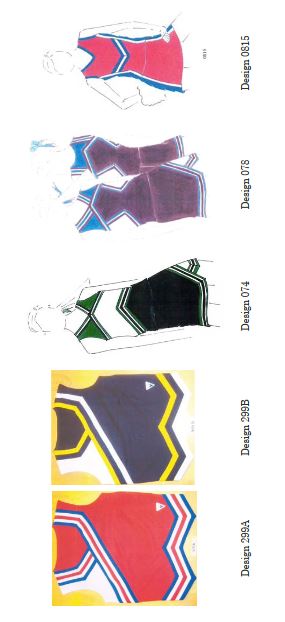Intellectual Property in the Fashion Industry
Intellectual Property in the Fashion Industry
by Iana Kazeeva
As you study intellectual property law, you will inevitably come across cases from the fashion industry. Moreover, these cases are important not just for the fashion business, but also have an impact on the application and development of intellectual property law as a whole.
Take as an example the EU Cofemel case (Cofemel – Sociedade de Vestuário SA v G-Star Raw CV), where copyright protection for designs of jeans, sweatshirts, and t-shirts was in question. In this case, the CJEU affirmed the requirements for copyright protection that are applicable to not just fashion designs, but any works protectable by copyright (namely, copyright protection arises upon fulfilment of the originality and expression requirements and thus national approaches where copyright protection is dependent on artistic or aesthetic value need to be reconsidered). In Kieselstein-Cord v. Accessories by Pearl, Inc., a case concerning copyright protection for belt buckles, the U.S. Court of Appeals for the Second Circuit specified when a pictorial, graphic, or sculptural feature may be identified separately from the utilitarian aspects of the article and thus be subject to copyright protection. This so-called “separability” test was further elaborated in Star Athletica, LLC v. Varsity Brands, Inc. on copyright protection for the graphic designs on cheerleader uniforms, heard by the U.S. Supreme Court.
In the area of trade mark law, the fashion industry provides outstanding examples of use of colour, patterns, or shapes as a trade mark. The lawsuits brought by Louis Vuitton to protect its checkboard pattern or by Christian Louboutin with respect to its red soles reveal the peculiarities in the regulation of trade marks in different jurisdictions. Guerlain v. EUIPO illustrates that the packaging of a product (the shape of a lipstick case) can be a trade mark, provided that it significantly diverges from the norms and customs of the sector and is capable of indicating the origin of the product. Tiffany & Co. v. Costco Wholesale Corp. exemplifies use of a mark (“Tiffany”) as a generic descriptor, which serves to indicate a particular type of a pronged ring setting. The court practice from the fashion industry can even provide practical tips in drafting trade mark licensing and purchase and sale agreements, especially in cases where a personal name has been used as a trade mark (see, for example, JA Apparel Corp. v. Abboud or Christian Lacroix v. Christian Lacroix, Snc).
The fashion industry also reflects the different approaches to the legal protection of designs. The EU harmonized the design laws of the Member States and introduced registered and unregistered community designs, which are sui generis regimes created specifically for the protection of designs. Whereas the U.S. has witnessed a long-lasting debate among scholars and practitioners arguing whether specific design protection legislation needs to be introduced. Despite numerous legislative attempts, no such laws exist in the U.S., except for the protection of vessel hull designs.
As in any other sector, emerging technologies are creating new possibilities and challenges for the fashion industry. Facebook, Inc. v. Kokhtenko is a notable example of a partnership between an online platform and a luxury brand (Gucci) in fighting the promotion and sale of counterfeit products online. Cryptocurrencies are also making their way in the fashion industry, which has been demonstrated by numerous NFTs and crypto-related trade mark applications by famous brands, as well as the notorious case Hermes Int'l v. Rothschild involving the so-called "METABIRKINS".
All these topics and cases are discussed in detail in the course “Intellectual Property in the Fashion Industry” developed and taught by Iana Kazeeva at the Department. The students delve into the complex issues of intellectual property laws of the EU and U.S., analyse trade mark licensing agreements, and learn about the impact of new technologies on one of the world’s most creative industries.


